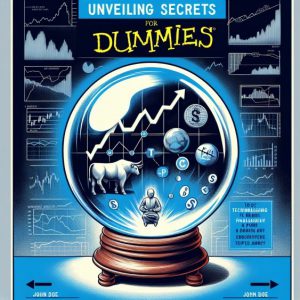
Mar 4, 2024
How does the media manipulate public opinion?
In the grand chessboard of public opinion, where society’s sentiments are the pawns and information is the queen, the media operates as the grandmaster, orchestrating moves with precision and intent. Understanding how the media manipulates public opinion is not just about recognizing bias or pinpointing propaganda; it’s about comprehending a sophisticated game of influence and persuasion that shapes the very fabric of societal consensus.
Media organizations have long been the arbiters of information, with the power to highlight issues, frame narratives, and influence decisions. This power stems from their ability to mould the perceptions of the masses, often bending the collective will in a direction that serves a particular set of interests. The question of how the media manipulates public opinion is pivotal because it is the first move in a complex game of societal influence.
Like the best AI-enhanced chess players who calculate countless possible outcomes before each move, the media carefully curates content to elicit specific reactions. These reactions are not haphazard but are part of a calculated strategy designed to guide public sentiment down a predetermined path.
The Power Play: Crafting Consensus
The media’s mastery of swinging public sentiment is evident in its ability to craft a consensus among disparate groups. By amplifying certain voices and silencing others, the media can create an echo chamber that reverberates with a unified message. This is where the critical phrase, “how the media manipulates public opinion,” transforms from a query into an observable phenomenon.
The media acts as a filter through which information flows, selectively presenting facts, figures, and opinions that align with a desired narrative. It is not merely about reporting events but about shaping how they are interpreted. Historical examples abound, from rallying public support for wars to defaming public figures, demonstrating the media’s capacity to turn the tide of public opinion with the ease of a chess grandmaster executing a well-planned combination.
The Middle Game: Emotional Resonance and Rational Discourse
Emotive Echoes: Steering the Heart of the Masses
The middle game in chess is about positioning and manoeuvring forces to control the board. Similarly, the media navigates the complex terrain of human emotion and logic to steer public opinion. One of the most potent tools in the media’s arsenal is the use of dynamic content to resonate with the audience on a personal level, often bypassing rational discourse altogether.
Stories that tug at heartstrings or stoke the flames of outrage can spread like wildfire, galvanizing public sentiment and creating a wave of emotional response that can overshadow more measured, analytical reactions. The media understands that humans are not just rational beings; we are also deeply emotional creatures, and tapping into that aspect of our psyche can profoundly impact how we perceive and react to information.
Analytical Anchors: The Role of Rationality
Yet, it would be an oversimplification to suggest that the media only plays to our emotions. There is also a place for rational discourse and critical analysis, which are analytical anchors that lend credibility to the emotional narrative. This duality mirrors the financial analyst’s market sentiment approach, where emotional trends and complex data are considered when forecasting market movements.
Much like a seasoned analyst, the media recognizes that the most effective strategy involves a balance between appealing to the emotions and engaging the audience’s intellect. By presenting data and expert opinions alongside human interest stories, the media can create a multifaceted approach to influencing public opinion, providing both the emotional impulse and the rational justification for a particular viewpoint.
Endgame Strategies: Solidifying Sentiment
Shaping the final narrative is a delicate process that involves a masterful blend of repetition, emphasis, and timing. The media’s role in this phase is crucial and multifaceted, encompassing everything from selecting which stories to pursue and highlight to the specific language used to describe events and individuals. This is where the question of “how the media manipulates public opinion” finds its most tangible expression.
Consistent reinforcement of the established message is achieved through various means. News cycles, for example, often focus on a particular story or angle for extended periods, embedding certain perceptions in the public’s minds. This can be seen in historical instances such as the lead-up to the Iraq War in 2003. Certain media outlets heavily emphasized the presence of weapons of mass destruction (WMDs), a claim that later proved to be unfounded. Yet, the repetition of this narrative had a significant impact on public sentiment, with many people accepting the existence of WMDs as fact, thus supporting the war effort.
Another example of media influence is the coverage of political campaigns, where the narrative can heavily sway public opinion. In the 2016 U.S. presidential election, for instance, the media’s focus on Hillary Clinton’s email scandal was relentless. The continuous coverage contributed to a cloud of suspicion that hung over her candidacy, affecting how voters perceived her trustworthiness and potentially influencing the election’s outcome.
The power of the media to make sure opinions seem self-evident can also be seen in its portrayal of social movements. The Civil Rights Movement of the 1960s, for example, gained significant momentum when television networks began broadcasting images of peaceful protesters being met with violence. The repeated exposure to these images helped to shift public opinion in favour of the movement, as the brutality against protesters became impossible to ignore or dismiss.
The media’s framing of conflicts can shape public perception and foreign policy on the international stage. For a hypothetical example, consider a scenario where a small nation is experiencing a civil war. If the media predominantly features stories of atrocities committed by one side without context or balance, public sentiment may quickly turn against that faction. This can lead to international intervention based on a narrative that may not fully reflect the complexities on the ground.
The agenda-setting function of the media is a critical component in shaping public opinion. By choosing which issues to cover and how to cover them, the media influences what the public thinks about and how they think about it. The framing of debates, the selection of experts to provide commentary, and even the omission of specific facts or viewpoints contribute to a narrative that can guide public sentiment toward a desired outcome.
The media’s role in shaping the final narrative is akin to the endgame in chess, where each move is designed to consolidate one’s position further until victory is achieved. Through the strategic use of emphasis, repetition, and framing, the media can make certain opinions appear inevitable, steering public sentiment with a subtlety that belies the true extent of its influence. In recognizing how the media manipulates public opinion, it’s imperative to remain critical of the information presented and seek out diverse perspectives to ensure a well-rounded understanding of the issues.
Contrarian Perspectives: The Value of Dissent
The value of dissent in shaping public opinion cannot be overstated, as it provides a necessary check against the homogenization of thought and the unquestioned acceptance of prevailing narratives. The role of contrarian perspectives is much like the role of the loyal opposition in a parliamentary system – to question, challenge, and provide alternative viewpoints that foster a more comprehensive and critical public discourse.
In historical contexts, the importance of dissenting voices has been demonstrated. During the Vietnam War, for instance, mainstream media initially supported U.S. involvement. However, as journalists and activists highlighted the war’s human cost and questioned the official government narrative, public opinion shifted. This shift was catalyzed by iconic images, such as the “Napalm Girl” photograph taken by Nick Ut, which brought the brutal realities of the conflict into the public eye. Over time, this contributed to a significant change in how the media manipulates public opinion, with media outlets providing more space for anti-war voices and reporting that challenged the government’s stance.
In the financial world, contrarian investors like Warren Buffett have shown how dissenting from popular opinion can produce substantial rewards. Buffett’s strategy often involves buying stocks undervalued by the market based on the belief that the market’s opinion is wrong. Similarly, in the media landscape, outlets that provide contrarian perspectives can offer deeper insights and highlight issues that mainstream narratives may overlook.
For a hypothetical scenario, imagine a media landscape in which a new economic policy is widely reported as a surefire way to boost the economy. Contrarian journalists might delve into historical data, revealing that similar policies in the past led to adverse outcomes like increased inequality or financial instability. By highlighting these past instances, contrarians can provide a more nuanced view that tempers the initial optimism and invites a more critical evaluation of the policy.
When the media engages with contrarian perspectives, it plays a critical role in the democratic process. It can prevent the formation of echo chambers, where a single viewpoint is amplified until it drowns out all others. This engagement is crucial for fostering informed debates and ensuring that the media maintains its integrity as a pillar of democracy rather than becoming a tool for how the media manipulates public opinion.
By encouraging a diversity of viewpoints, the media ensures that the public is exposed to a broad spectrum of ideas and analyses. This pluralism safeguards against manipulating public sentiment, allowing for a more educated and engaged citizenry. It is also a testament to the power of information and the responsibility of the media to present it in a way that is both comprehensive and balanced, allowing the public to form opinions based on a full range of perspectives.
Checkmate: The Final Move in Media Influence
How the media manipulates public opinion is not just about analyzing the moves; it’s about recognizing the game itself. With its mastery of language, imagery, and narrative structure, the media has the power to influence not just what we think but how we feel. It can steer public sentiment with subtlety and precision, rivalling the most sophisticated AI or skilled chess player.
The responsibility then falls on us, the audience, to approach the media critically, question the narratives being presented, and seek out diverse sources of information. Just as in chess, where a player must anticipate the opponent’s strategies and plan accordingly, we must also be vigilant opponents strategiestion, constantly aware of the potential for influence and manipulation.
Understanding how the media manipulates public opinion is about more than just recognizing the moves on the board. It’s about appreciating the game’s skill, the nuance of each play, and, ultimately, the immense power that comes with the ability to shape public opinion.
Inspiring Ideas: Spark Fresh Thinking

Active vs Passive Investors – The Power of Discipline

Investing allows you to beat inflation and maintain the purchasing power of your money over time

Mass Psychology of Fascism: Unmasking Bombastic News

OVV Stock Forecast: Buy, Hold, or Sell?

What Does a Death Cross Mean in the Stock Market? Exploring Its Significance

Financial Freedom Book: A Pinch of Salt, a Splash of Whiskey

Unveiling Secrets: Technical Analysis for Dummies

The Primary Purpose of Portfolio Diversification is to Finesse Your Investments for Optimal Returns

The Enduring Reign: Why is the US Dollar the World’s Most Pre-eminent Currency?

Fiat Money Example: The Dollar Shines as a Prime Illustration

Dogs of the Dow ETF: BiggerBite, Less Work

How Do You Win the Stock Market Game? Effective Strategies

Black Monday 1987: Turning Crashes into Opportunities

Technical Analysis of Trends: Cracking the code



